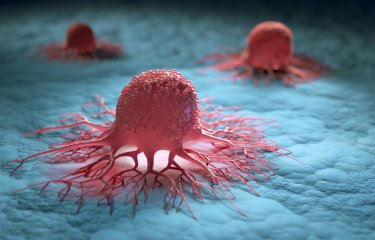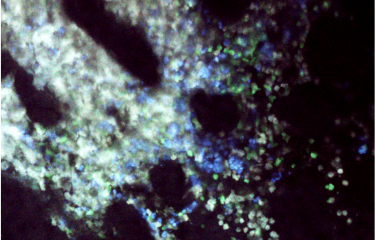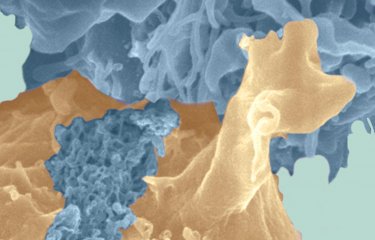The Journal of Molecular Diagnostics and the Institut Pasteur report that a new test enhances ability to predict risk of developing cervical cancer in human papillomavirus (HPV)-positive women. This two-fold test is capable of detecting and determining the type of HPV infection as well as the likelihood of progressing to cancer.
Philadelphia, August 12, 2019 – Ninety-nine percent of cervical cancers are caused by human papillomavirus (HPV). More than 200 HPVs, some of them being associated with varying degrees of cancer risk, complicate diagnosis and treatment. A report in The Journal of Molecular Diagnostics, published by Elsevier, describes a new “two-for-one” diagnostic approach that not only detects the type of HPV infection, but also indicates precancerous markers. This test may improve the ability to diagnose the riskiest forms of HPV infection, provide rapid results at low cost, and help avoid unnecessary diagnostic procedures.
“We have developed HPV RNA-Seq, a novel in vitro molecular diagnostics procedure for the detection of high-risk HPV infection and the identification of patients with high-grade squamous intraepithelial lesions (HSIL), which is a precancerous stage of the cervix. HPV RNA-Seq is a unique test that combines the advantages of molecular assays (HPV typing) and cervical cytology (cell phenotyping),” explained lead investigator Marc Eloit, DVM, PhD, of the Pathogen Discovery Laboratory, Biology of Infection Unit, Institut Pasteur, Paris, and the National Veterinary School of Alfort, Paris-Est University, Maisons-Alfort, France.
Cervical cancer screening allows detection and treatment of precancerous lesions before cancer develops. Currently, screening either focuses on testing for HPV or identifying abnormal cervical cells with cytology. However, molecular diagnostic tests that detect the DNA or RNA of viruses are poor at identifying cancer or precancerous lesions. Analysis of cervical cells with the Pap test, even when combined with molecular detection of high-risk HPV, results in a significant number of unnecessary colposcopies, an invasive test by which the physician visually checks for cervical lesions.
In this proof-of-concept study, HPV RNA-Seq was used to analyze samples from 55 patients, 28 with low-grade squamous intraepithelial lesions (LSIL) and 27 patients with precancerous HSIL.
HPV RNA-Seq was able to detect and determine the type of HPV infection among a panel of 16 high-risk HPVs with results comparable to a widely used and officially approved HPV DNA molecular diagnostic kit. In fact, HPV RNA-Seq detected two more HPV-positive patients than the DNA test and also identified more patients with multiple HPV infections.
The test was found to have a sensitivity (ability to detect the presence of an HPV) of 97.3 percent and negative predictive value (NPV, likelihood of not having HPV) of 93.8 percent. “Effective cervical cancer screening requires high sensitivity and NPV for high-risk HPV infection, since women with a negative HPV test are usually tested again only after several years,” noted Prof. Eloit.
Cytology is used as a rapid method to triage patients with HPV whereas histology is considered the gold standard for cervical cancer diagnosis. Histological analysis, however, is more invasive and requires more time to yield results. To determine if the new test has a place in cervical cancer triage, the investigators also compared cytology to HPV RNA-Seq and found markers of high-grade cytology, with encouraging diagnostic performances of HPV-RNA-Seq as a triage test. They also found the positive predictive value (PPV, likelihood of having HPV infection) of HPV RNA-Seq vs. histology was always greater than the PPV of cytology vs. histology. “This observation constitutes a solid argument in favor of a potential added medical value of HPV RNA-Seq compared with cytology,” commented Prof. Eloit.
Prof. Eloit suggests that the use of HPV RNA-Seq in certain patients can help eliminate unnecessary colposcopies. He also foresees a time when technology will allow many samples to be run simultaneously, lowering the cost to perhaps $10 to $20 per test. The test may also be applicable for other HPV-associated cancers such as anal cancer and head and neck cancer.
HPV RNA-Seq is based on the dual combination of multiplexed reverse transcription PCR (RT-PCR) and next-generation sequencing (NGS). RT-PCR is a sensitive way to measure small amounts of RNA, the genetic material that reflects the activity of the HPV genes, and NGS makes it possible to finely characterize the diversity of the amplified viral sequences. This enables detection of up to 16 high-risk or putative high-risk HPV in a sample as well as the presence of precancerous markers.
“Our approach follows the current trend of developing NGS amplicon panels for molecular diagnostics, while remaining adaptable to traditional molecular assays formats. This flexibility can make HPV RNA-Seq a convenient, robust, and affordable solution for many laboratories,” added lead author Philippe Pérot, PhD, Pathogen Discovery Laboratory, Biology of Infection Unit, Institut Pasteur, Paris, France.
Source
Broad-Range Papillomavirus Transcriptome as a Biomarker of Papillomavirus-Associated Cervical High-Grade Cytology, The Journal of Molecular Diagnostics, August 12, 2019
Philippe Pérot, Anne Biton, Jacques Marchetta, Anne-Gaelle Pourcelot, André Nazac, Henri Marret, Thomas Hébert, Delphine Chrétien, Marie-Christine Demazoin, Michaël Falguières, Laurence Arowas, Hélène Laude, Isabelle Heard, and Marc Eloit
DOI : https://doi.org/10.1016/j.jmoldx.2019.04.010





